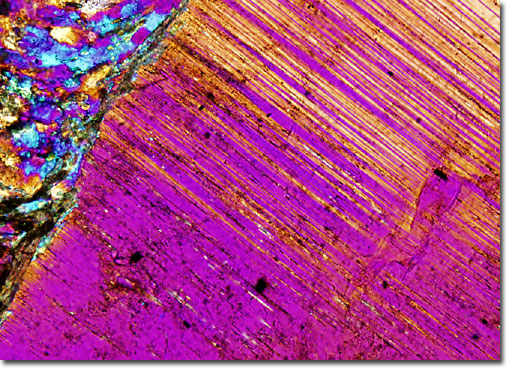|
Mylonites, which can be found among rocks of all ages, are typically believed to be only formed in shear zones. Pressure, temperature, and strain are the primary factors that determine whether or not a mylonite or some other type of metamorphic rock will form when intense folding or faulting occurs. If these dynamics fall outside of a certain range, the process of metamorphism may result, for instance, in a cataclastite, gneiss, or granulite, rather than a fine-grained, highly laminated mylonite. In addition, mylonites require two discrete kinds of constituents in order to form: a hard element that generates larger-grained porphyroclasts and a softer element, which develops into the rock’s fine-grained matrix.
|
